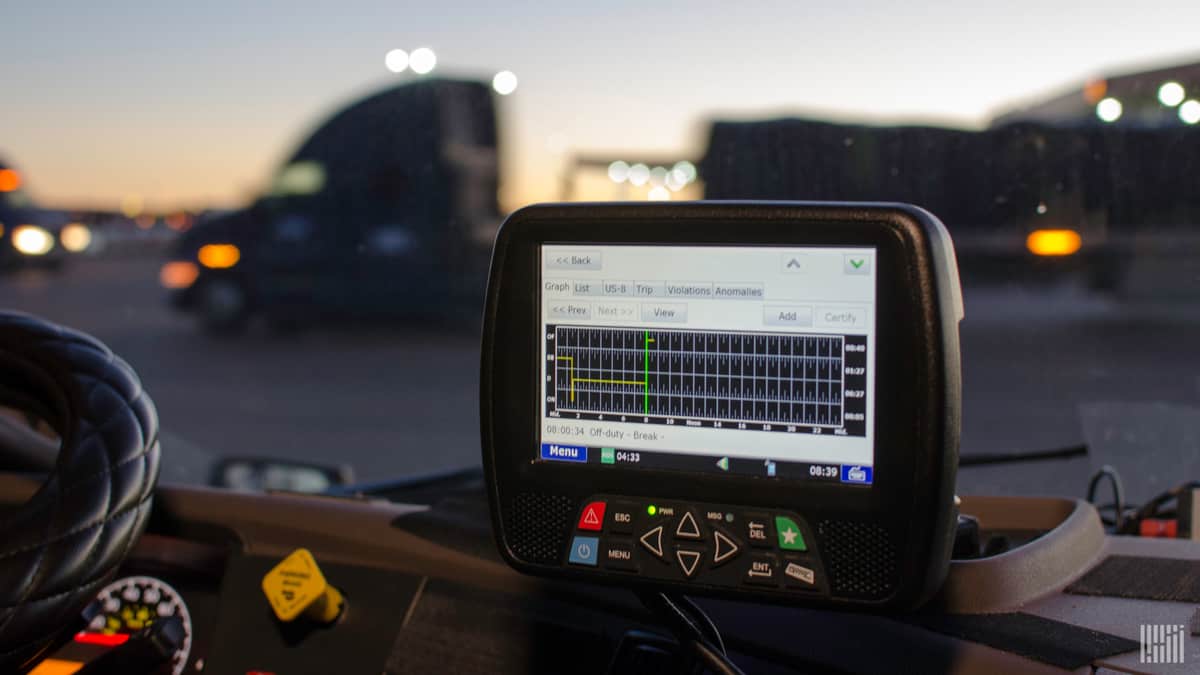How Electronic Logging Devices Improve Driver Safety and Compliance
ELDs prioritize driver safety and enable fleet managers to track drivers’ HOS limits. They also save drivers time by eliminating the need to check in with dispatchers and can help prevent accidents caused by dangerous driving behaviours like speeding. But how exactly do these devices work? This article will cover how ELDs are used by commercial motor carriers and truck drivers to comply with the FMCSA’s ELD mandate.
Reduced Paperwork
Using ELDs helps drivers save time by automating the process of logging HOS. Reducing the need to track driving hours manually allows fleet managers and drivers to focus on other tasks, like monitoring fuel usage or scheduling preventative maintenance. Additionally, if drivers aren’t constantly running out of time to rest, they’re less likely to get into accidents. A truck driver who doesn’t use an ELD can run into trouble if they are pulled over for an inspection. To avoid this, the ELD mandate requires that trucks use an FMCSA-approved device to log driving and rest periods. These devices automatically record engine data, vehicle location, mileage, and driver ID. Depending on the system, they can also include features like accelerometers and gyroscopes to detect unsafe driving behaviors such as speeding or harsh braking. These devices then transmit the tamper-proof data to back office systems via a USB connection.
Real-Time GPS Tracking
ELDs enable truckers to track the location of their vehicles, a vital component for fleet management. They also help fleets handle DOT inspections by providing up-to-date data that can be verified with a click. In addition to reducing the workload of fleet personnel, electronic logging devices help drivers manage their time more efficiently and reduce fatigue-related accidents. This mitigates the risk of costly traffic violations, saving companies hefty expenses such as vehicle servicing costs, compensation fees for accident victims, and excessive insurance premiums.
Additionally, some modern ELDs come with accelerometers and gyroscopes to detect harsh driving events such as collisions, hard braking, and rough cornering. Fleet managers can then use this historical data to train drivers on safer driving practices and improve driver safety. Moreover, they can also leverage the GPS feature to show authorities the truck’s exact location. This can facilitate smoother enforcement of HOS regulations, especially when drivers are stopped for inspections.
Enhanced Safety
The ELD mandate makes sure that truck drivers comply with HOS rules. But they also reduce driver fatigue, improve safety, and increase productivity across the fleet. A good ELD can’t be tampered with to falsify driving records, making it more reliable than paper logs. They also allow fleets to track fuel efficiency with features that detect speeding, harsh braking, and engine idling—and flag drivers regularly repeating those behaviors. An advanced ELD can be integrated with the company’s fleet management software to manage its transportation operations. This gives managers a single source of truth that can help them coach drivers, save on fuel costs, and minimize risky behavior.
Reduced Insurance Costs
ELDs enable fleet managers to monitor the condition of vehicles in real time. By tracking engine faults and monitoring driver behavior, fleets can reduce maintenance costs and avoid costly repairs. As a result, fleets can save money and increase productivity. Furthermore, fewer vehicle breakdowns can minimize downtime and improve the overall safety of drivers. The FMCSA mandated that trucks use electronic logging devices to track driver hours of service (HOS). These devices are easy for drivers to follow and can help fleets meet compliance requirements and improve driver safety.
Additionally, ELDs are difficult to tamper with or manipulate and can flag violations immediately. This increases HOS compliance and helps fleets maintain their CSA scores. Additionally, it prevents drivers from taking risky shortcuts or operating their trucks aggressively in traffic to make deliveries faster. These unsafe practices can lead to truck accidents, the number one cause of fatalities in the transportation industry.

